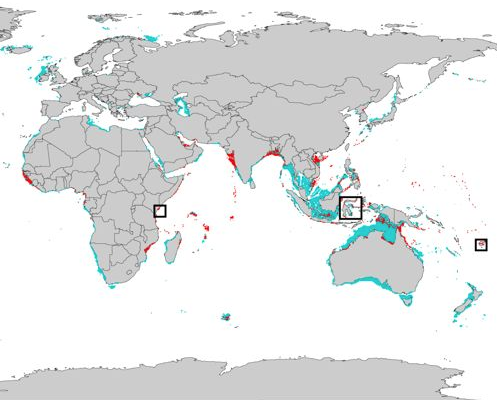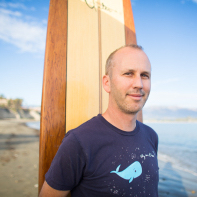As the global human population increases, food systems are under intense pressure to produce animal protein that meets rising demand. With the plateau in catch from wild fisheries and severe environmental impacts of land-based agriculture, the world is looking to aquaculture to provide a sustainable protein source. As the fastest growing food sector, aquaculture has overtaken wild seafood production, but questions still remain on how to guide this emerging sector to ensure sustainable expansion.
OUR APPROACH: The team identified and addressed key broad-scale social and ecological questions surrounding aquaculture and mapped areas with the greatest potential for offshore aquaculture development in the top suitable areas. They also identified the tolerance of farmed marine species to changing ocean conditions.

Mapping Aquaculture Hotspots
To understand the possibilities and major limiting factors of offshore aquaculture, the team mapped the biological production potential for 180 marine aquaculture species. Major findings from the map include:
- If all suitable areas were developed, 15 billion tonnes of finfish could be grown every year (100 times the current global seafood consumption)
- Only 0.015% of the most suitable global ocean area would need to be developed to match current landings of all wild-capture fisheries
- Most countries would need to farm less than 1% of their “exclusive economic zone” to produce all of the seafood they currently consume
Aquaculture in a Changing Ocean
Variability in the marine environment means that it is critical to understand aquaculture species’ attributes that influence their sustainability and tolerance to changing ocean conditions. The team discovered that larger, slower growing species are more tolerant to cumulative changing oceanic conditions. However, these organisms can require more resources to grow, making them less sustainable. They also found subtropical and temperate water species to be more tolerant of changes in temperature and oxygen levels. Therefore, offshore aquaculture operations might want to shift their focus from tropical species to subtropical and temperate species.

“Marine aquaculture provides a means and an opportunity to support both human livelihoods and economic growth, in addition to providing food security. It’s not a question of if aquaculture will be part of future food production but, instead, where and when.”
– Ben Halpern, Project Co-Lead
The team’s findings published in Nature Ecology & Evolution indicate that the development potential of offshore aquaculture far exceeds the space required to meet foreseeable seafood demand, and presents an opportunity for countries to develop aquaculture in a way that aligns with their economic, environmental and social objectives.
The Conservation Aquaculture Research Team (CART’) is an initiative that spawned from this SNAPP team’s research. CART’s primary mission is bridging the scientific gap in understanding between aquaculture, climate change and larger food systems to inform policy and help align seafood production with conservation objectives.
In this TED Talk, Team member Mike Velings presents a case for sustainable aquaculture expansion.